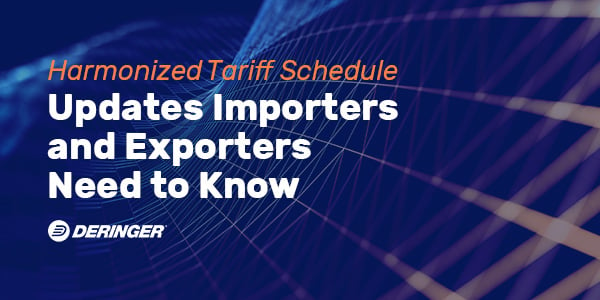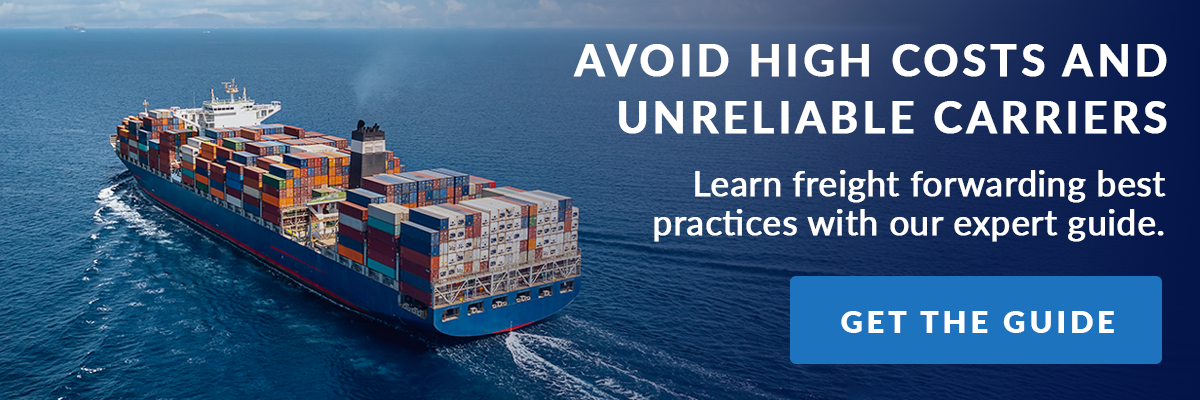
News headlines hardly noticed when President Biden signed Proclamation 10326 to modify the Harmonized Tariff Schedule of the United States (HTSUS) in December 2021. But it represented a major step for international trade.
The proclamation recognized changes made to the Harmonized Commodity Description and Coding System (HS) by the World Customs Organization (WCO), which reviews the system every five years.
HS 2022 went into effect on January 1, 2022. The seventh edition of the rules comprised 315 sets of modifications on a range of products. The changes significantly improved the harmonized system, and participating countries, such as the U.S., will use these revisions to update tariff systems across the globe.
It behooves importers and exporters to understand these new rules and how they change tariffs and duties for their goods. Failing to understand them completely can have consequences, including overpayment, fines, and delays.
What are Harmonized Tariff Schedule Codes?
Harmonized codes, developed by the WCO, are internationally recognized codes that classify imported products for duty and tax purposes. They include 5,000 commodity groups, each identified by a six-digit number.
WCO allows countries to add longer codes to the first six digits for further classification. For instance, the U.S. uses a 10-digit code to classify products. The first six digits are the HS number. The other four digits are known as the Schedule B number. The U.S. has a Schedule B number for every physical product, from paper clips to airplanes.
The coding system assigns HS numbers to specific imported items to identify and classify them so governments can calculate importers’ duties or tax amounts. The codes protect trade fairness from country to country.
Over 200 countries and economies use this system as a basis for Customs tariffs. Congress first enacted the Harmonized Tariff Schedule of the U.S. (HTSUS) based on HS in 1989. In the U.S., these codes:
- Calculate import duties
- Measure import quotes
- Aid reporting
- Determine Partner Government Agency (PGA) oversight
Updates to the Harmonized Tariff Schedule
The Biden Administration overhauled the HTSUS to align with the HS 2022 updates, which addressed:
- Advances in technology
- New product streams
- Changing trade patterns
- Environmental concerns
- Health and safety issues
- Terrorism
- Implementing international conventions
Products affected by these changes include 3D printers, cell cultures and cell therapy, chemicals and other materials controlled by international conventions, electronic waste, fully electric vehicles, smartphones, drones, and more.
Importers need to understand these changes as they can impact current product classifications and change duty rates, the applicability of trade remedies, and duty preference programs.
All updates to the HTSUS are listed here.
Modifications to Garments
HS 2022 contains specific categories for fabric, garment construction methods, embellishment techniques, and textile components or processed manufacturing for apparel and textiles. For example, there are different tariff codes for knit fabrics made from silk yarns versus fabrics made from synthetic yarns.
The recent HTSUS overhaul includes significant changes to product descriptions, tariff provisions, and legal notes in several chapters pertaining to apparel and textile importers. The changes align U.S. classifications with other WCO member nations and ensure product descriptions reflect technological advances and industry trends, including health and safety considerations.
Classifications and duty rates changed for the following garments:
- Constructed of man-made filament yarns, including knitted or crocheted garments
- Made from cotton, including knitted or crocheted garments
- Using man-made staple fibers, including knitted or crocheted garments
- Produced from other textile materials, including knitted or crocheted garments
- Made of laminated or coated fabrics
Articles of apparel and clothing accessories, not knit or crocheted, were also affected.
Each code comes with its own set of rules regarding types of material, quality, size, design, and branding, requiring importers to determine and understand the minutia of their final products. Once importers know these details, they can properly classify their goods.
Changes in Technology or Product Innovations
HS 2017 redrafted and renumbered motor vehicles under headings 87.02 and 87.03 to provide for hybrid electric, plug-in hybrid, and all-electric motor vehicles. HS 2022 expanded on this to give tractors (heading 87.01) and motor vehicles for the transport of goods (heading 87.04) new subheadings to provide for partial and fully electrical heavy-duty vehicles.
Importers of heavy-duty tractors or motor vehicles used for goods transport must now identify whether their vehicles classify as partially or fully electric. If they do, new HS codes and new duty rates will apply. Remember, making classification mistakes can cost money. Proper classification ensures importers pay the correct duties on these products.
WCO added Heading 84.85 for “machines for additive manufacturing” to account for 3D printers. Under this heading, five subheadings differentiate machine types:
- By metal deposit
- By plastics or rubber deposit
- By plaster, cement, ceramics, or glass deposit
In addition, the update adds a new subheading for smartphones under 8517.13. Note 5 under Chapter 85 also defines the scope of a smartphone.
Updates for Food & Agriculture Organizations (FOA)
HS 2022 made updates that affect food and agricultural imports. For instance, they added subheading 0410.10 for edible “insects.” Edible insects received their own subheading signaling an increase in edible insect consumption to meet the threshold to qualify for a separate subheading.
Other changes included adding the word “insect” to “Sausages and similar products, of meat, meat offal, blood, or insects; food preparations based on these products” under subheading 1601.00, as well as giving distinct subheadings to different mushroom types (under heading 07.09) and pine nuts (under heading 08.02).
Assigning distinct subheadings will facilitate better trade data collection for these products.
Final Thoughts
This represents a small list of notable updates, but with over 300 HS changes, all importers need to consider whether HS 2022 and the subsequent HTSUS updates changed classifications and duties for their products.
Importing is a complicated process, and keeping up with changes in HS codes is difficult. But these codes must be correct because they determine the amount of duty owed on specific products, and mistakes can be costly.
Importers are skilled at running their businesses but often lack the knowledge to classify their commodities correctly. A licensed Customs broker can guide HTSUS classifications to ensure companies avoid mistakes and do not overpay on imports as they go through Customs.



